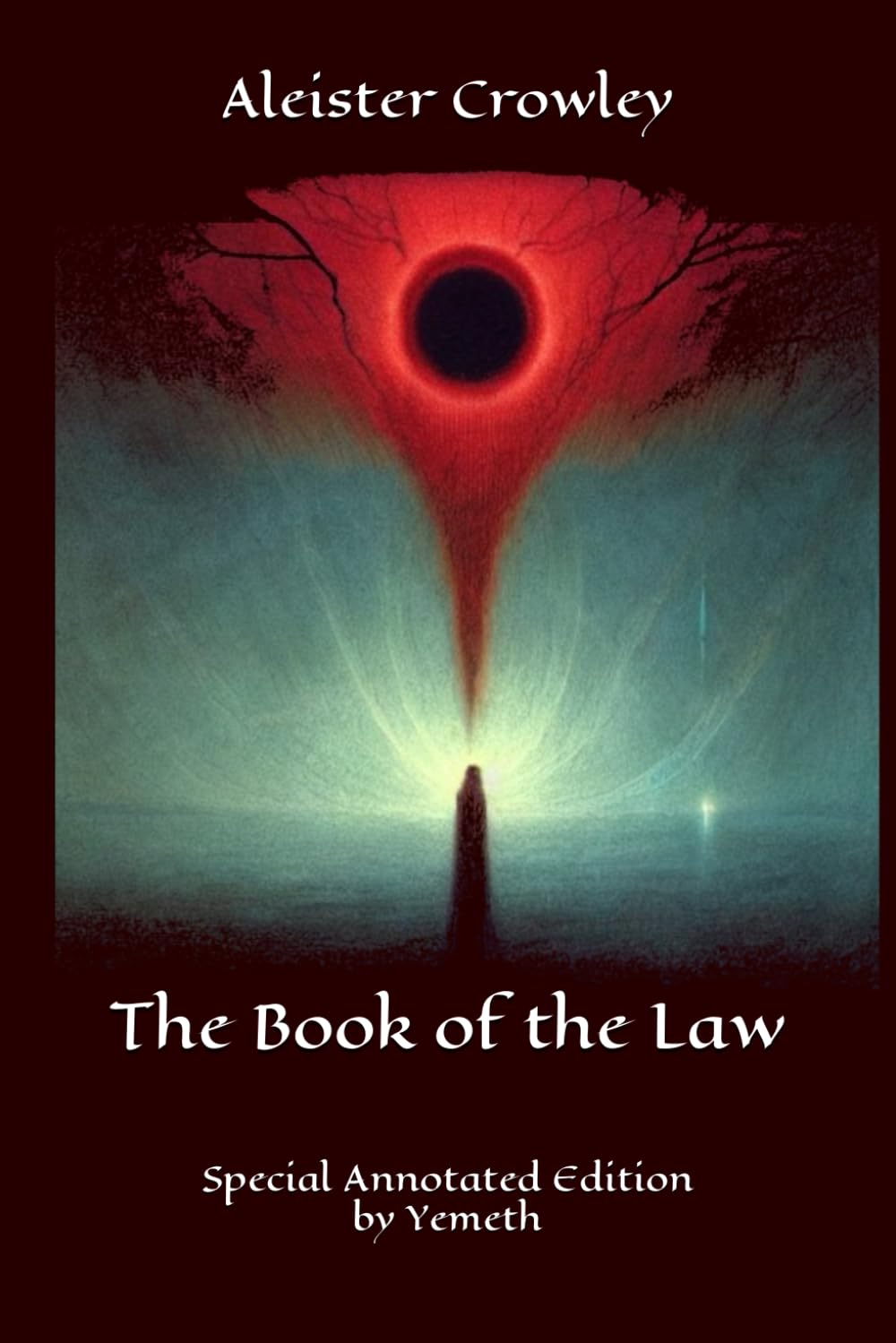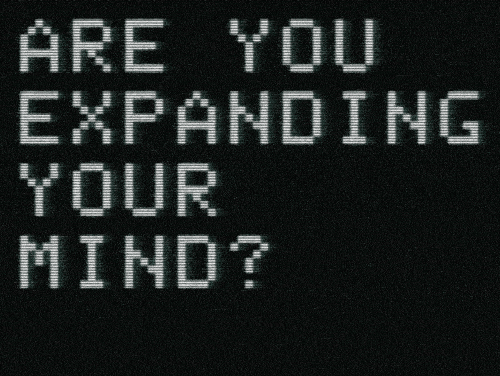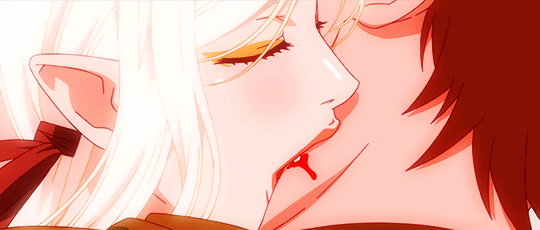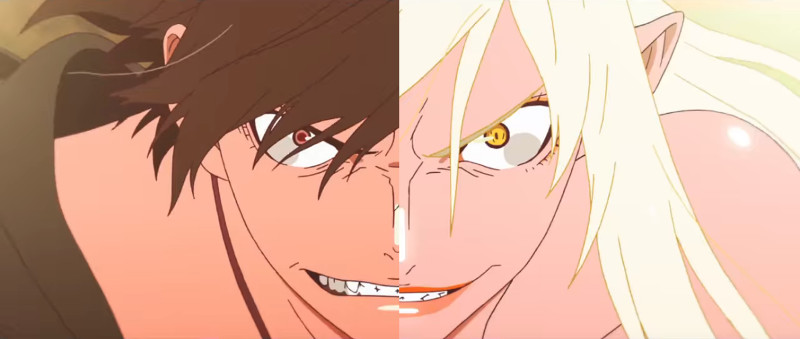|
The many faces of the unconscious: Jung’s initiatory insights
by yemeth
|

|
(Special Annotated Edition) carefully annotated edition, featuring 200 footnotes. |
|
This article is part of a series on Initiation. See them all in this section |
|
 Personal Unconscious: The Shadow Even though the jungian model of initiation doesn’t seem to cover every step in so far as it considers that the initiate shouldn’t throw himself into the Abyss in which the conscious ego is definitely dissolved, it features quite an interesting walkthrough that should prove useful for most. The jungian “individuation process” features two phases which roughly correspond to the Initiation into Chapel Perilous (and the subsequent bringing down to earth of those energies), and the path towards the Knowledge and Conversation of the Holy Guardian Angel. The first phase in jungian individuation is the encounter with the Shadow, which for Jung is the same as the personal unconscious of the psychonaut. On this terrifying encounter also known as “Chapel Perilous”, “Initiation of the King” or “Vision of the Holy Guardian Angel”, Jung wrote that: Whoever looks into the mirror of the water will see first of all his own face. […] This confrontation is the first test of courage of the inner way, a test sufficient to frighten off most people. It is usual indeed to experience a first “scare”, as if it was there to warn the psychonaut. After experiencing it, we either run away or decide to fully dive. In Initiation, the personal unconscious that we project through neurosis into others runs free. It is the same mechanism Jacques Lacan described when he spoke on the “foreclosure of the Name of the Father” and subsequent psychosis, in which our unconscious manifests through our subjective experience of reality. That is to say, this is a place where our personal reality is built from our deepest unconscious fears. Like Robert Anton Wilson wrote in his Cosmic Trigger, “Everything you fear is waiting with slavering jaws in Chapel Perilous”. Jung’s warnings on facing our personal unconscious aren’t less frightening: “Anyone who descends into the unconscious gets into a suffocating atmosphere of egocentric subjectivity, and in this blind alley is exposed to the attack of all the ferocious beasts which the caverns of the psychic underworld are supposed to harbour.” Jung also wrote in detail about the uncertainty of this world that opens to those who walk through that cursed Threshold and confront their shadow self, their personal unconscious: “For what comes after the door is, surprisingly enough, a boundless expanse full of unprecedented uncertainty, with apparently no inside and no outside, no above and no below, no here and no there, no mine and no thine, no good and no bad” The author is even quite explicit when he refers to the way synchronicities -a term he created- pile up in this forsaken place, so much that they feel as if reality had woken up and the neophyte was the conversation topic of everything around him: “There I am the object of every subject, in complete reversal of my ordinary consciousness, where I am always the subject that has an object. There I am utterly one with the world, so much a part of it that I forget all too easily who I really am.”. He also uses here the metaphor of “gods” (which he also calls “factors”), since “if we step through the door of the shadow we discover with terror that we are the objects of unseen factors”. And as if they were the accuser of God, these “factors” show us “our own inadequacy”. The real danger from the encounter with the Shadow is pointed out as well by Jung: “the greatest danger threatening us comes from the unpredictability of the psyche’s reactions”. Panic may make us react irresponsibly, and we’d probably be considered insane if interacted with in such a situation. Even worse, we could end up believing our own deliriums. Be careful!  Personal and Collective Unconscious: The Archetypes Whereas the encounter with the shadow is the encounter with the personal unconscious, Jung didn’t agree with the freudian idea that the whole unconscious is strictly personal. He thought there are parts of our unconscious that have been imprinted throughout human existence and therefore are the same for each and every of us. That is to say, they’re inherited instead of individually developed. Almost as if they were instincts. This part of our unconscious minds isn’t related to our personal darkness neither to our personal trauma, but to a deeper strata which manifests on the ethnological level through apparently similar myths in widely different cultures. This is what he called the “collective unconscious”. Regardless of whether it is the personal or collective unconscious, it is composed of “Archetypes”. These are a series of primordial images imprinted before any socialization. Even though the shadow is the personal unconscious, it is an “Archetype” in so far as it is a structure of the unconscious. So are others like the anima/animus, the Self, and so on. The next initiatory step after the encounter with the shadow involves working with the anima/animus syzygy, which is supposed to belong to this collective strata of the mind: If the encounter with the shadow is the ‘apprentice-piece’ in the individual’s development, then that with the anima is the ‘master-piece’. The anima is a feminine Archetype that is supposed to belong to male minds and the animus is a masculine Archetype that is supposed to belong to female minds. However, it should be noted that the male/female division of the actual animus/anima comes from a time when male and female socialization and cultural construction of gender identity were way more strict than they currently are, so they might be outdated and just too restricting if we were to take them literally. We should focus on what really is important in this jungian structure of the anima/animus Archetype: Roughly, whereas the shadow is made of “negative” things you repress, the anima/animus holds “positive” traits that belong to you, but which you haven’t dared to make yours. Both shadow and anima/animus are “repressed”, yet in different ways. There is also a relationship between the shadow and the anima/animus. The shadow is described as “a darkness that hides influential and autonomous factors [gods] which can be distinguished in their own right, namely anima and animus”. Jung sometimes even “blames” the anima/animus for the contents of the shadow, as if the “evil” from the shadow wasn’t evil but a distortion due to the anima/animus. “These falsifications and caricatures now appear as the specific effects of anima and animus, and the latter as the real authors of evil”. My practical experience here is that the main features of the anima correspond to those of the shadow. Those personal issues that constitute the main repressed contents of the unconscious, seem to share the same nature of those that are projected as anima/animus. It appears to me as if the development of our potential self needed us to untie two knots from the same rope in the correct order. Shadow integration and the appearance of the Anima/Animus Before initiation, we neurotically project upon others and criticize in them the contents of our shadow, until we make it conscious when we traverse the fantasy/defeat the Lesser Guardian of the Threshold/pass through Chapel Perilous or the Duat/transcend psychosis. Both before and after that, we project upon our lovers the contents of our anima/animus. Even after dealing with the shadow in the Chapel Perilous initiation, we still haven’t fully integrated it. The energies liberated after this initiation manifest our innermost desire, a love tainted by our shadow and brought by an anima/animus we still can’t tell apart from our lover, and thus a terrible risk for the initiate. This becomes a trap we must liberate ourselves from. Some have named this the “Ordeal of the Siren” or the “Ordeal of the Vampire”, and we are warned that the anima/animus will try to hold us prisoner before it becomes an useful guide. This is the “woman as temptress” in Campbell’s “Hero’s Journey”. Since the anima/animus traits are those from our own (desirable) traits we have not assumed yet, we desire them in others. They become the foundation of our desire towards others. They make us fall in love. In the aftermath of Chapel Perilous the energies we liberated manifest someone we attach our anima/animus to. We risk to be trapped forever. And until we’ve successfully integrated the shadow, “a recognition of anima and animus is impossible”, so we cannot just separate this Archetype from our lover and work with it. Therefore, the solution is to escape from this mousetrap. Instead of searching for a better anima/animus representative, we might as well truly learn to identify it. Jung relates his anima concept to Eliade’s "celestial wife". This is described in Eliade’s writings about Buryat shamanism in "Shamanism: Archaic Techniques of Ecstasy”. Here, the celestial wife is conceived as "the shaman’s helper and inspirer". Celestial wives are important since they’re supposed to "help him either in his instruction or in his ecstatic experience", but even though they’re essential to the shaman they aren’t the core of the path. However, there is an interesting slice of wisdom in Eliade’s musings on the celestial wife that Jung connected with his idea of the anima. Buryat shamans’ celestial wives live in the seventh heaven. During his ascent to the sky, every shaman meets hers and she asks him to remain with her. She offers the shaman an exquisite banquet and the pleasures of the flesh, and tells him the road to the sky has been blocked. The shaman must reject any food that is offered and promise not to eat anything before his journey is over. Eliade reminds us, this is reminiscent of the mythical theme in which a mortal gains access to the fairy realm and he mustn’t eat anything. Otherwise, he will never be able to go back. You might as well consider this forbidden feast a metaphor for the initiate’s sexuality.  Evocation and invocation Since the anima/animus is a structure with no ego but a series of traits (a personality) which already belong to us, once we’ve truly dealt with our shadow, earthed its Initiation and got away from the anima/animus mousetrap we can begin to identify and integrate it. This distinction between shadow and anima/animus may roughly remind us of a couple of classic magickal techniques, which can be easily related to these Archetypes. We evoke things that are inside ourselves and which we want to make conscious and make external to us. This is why we evoke ‘demons’: We evoke our shortcomings, we evoke things we need to bring out of ourselves so we can deal with them. We evoke our shadow. However, if we want to acquire some positive traits, we invoke ‘Gods’ so that they overwhelm our consciousness. We invoke them to gain whatever positive gifts they may have in store for us. We invoke the projected contents of our anima/animus so they become a part of us. “They personify those of its contents which, when withdrawn from projection, can be integrated into consciousness”. Our anima/animus is our full potential self. We perceive it as a numinous presence of otherness. It incarnates the most powerful version of ourselves, and knows without a doubt what our true power is. Anima/animus is also the archetype of life itself, and it is diametrically opposed to death-yearning dullness. Thus, we may truly glimpse her as an autonomous entity for the first time once we’ve detached at last from every earthly hope. Since the anima/animus is the archetype of life, we must fully negate it within ourselves in order to meet it. Once our battle-weary eyes have sunk in despair finding no transcendent light in any potential lover, once we’ve become friends with hopelessness, s/he will appear split from any earthly vessel. Just as it is important to make our inner unconscious shadow visible and integrate it, we must learn to split up the anima/animus from our lovers. Until we do, “She intensifies, exaggerates, falsifies, and mythologizes all emotional relations with his work and with other people of both sexes”. This split we must do according to Jung through a relation to a partner of the opposite sex: “The recognition of the anima gives rise, in a man, to a triad, one third of which is transcendent: the masculine subject, the opposing feminine subject, and the transcendent anima. With a woman the situation is reversed” That is to say, we need to deal with this numinous third subject through a relationship in which we split it from our lover. This isn’t as disastrous as it may appear love-wise, since such a split may allow for consciously loving the other person instead of letting the anima/animus projection drive our feelings and sexuality and leaving when our partner doesn’t live up to our unfair expectations. We should neither just toss the anima/animus together with the Holy Guardian Angel idea from western magick. The anima/animus could be characterized as a psychopomp that mediates between the conscious and the unconscious and personifies it, and we could consider it may lead us towards the K&C of the HGA (Jung wrote it is “the psychopomp who leads the way to the Elysian fields”). But since the unconscious manifests through several Archetypes (and we may have the bias of considering it strictly internal), it would be problematic to consider them one and the same thing. In any case, the HGA should be likened to the whole of the unconscious. Aleister Crowley wrote in his Liber Samekh comment: “The Holy Guardian Angel is the Unconscious Creature Self - the Spiritual Phallus”. Jung’s idea isn’t that we just merge with the anima/animus -he isn’t very positive about anima possessed men or animus possessed women-, but that we should develop a conscious relationship with this Archetype, splitting it up from a lover. The contents of the anima/animus can and should be integrated, but “they themselves cannot, since they’re Archetypes”, since they are ”beyond the reach of perception and volition. Hence they remain autonomous despite the integration of their content”. That is to say, one can never fully integrate them: "[The anima and animus] personify those of [the collective unconscious] contents which, when withdrawn from projection, can be integrated into consciousness. To this extent, both figures represent functions which filter the contents of the collective unconscious through to the conscious mind". Therefore, even though we cannot integrate the Archetype since it is a function, we can integrate the content through what Jung calls “a higher union, a coniunctio oppositorum”. In fact, he asserts that this final result is the coniunctio oppositorum that “engaged the speculations of the alchemists in the form of the ‘Chymical Wedding,’ and those of the cabalists in the form of Tifereth and Malchuth or God and the Shekhinah”. This might bring us as well to consider the parallel which could be drawn between this and the balance between Hod and Netzach, archetypically considered as masculine and feminine. “Anyone who wants to achieve the difficult feat of realizing something not only intellectually, but also according to its feeling-value, must for better or worse come to grips with the anima/animus problem in order to open the way for a higher union, a coniunctio oppositorum. This is an indispensable prerequisite for wholeness” Once we’ve worked enough with the anima/animus, the unconscious is to change again the Archetype through which it manifests: "If an individual has wrestled seriously enough and long enough with the anima (or animus) problem so that he, or she, is no longer partially identified with it, the unconscious again changes its dominant character and appears in a new symbolic form, representing the Self, the innermost nucleus of the psyche". And thus, the chance of the “divine marriage” emerges. To the triad that has been mentioned of man with woman and anima, of woman with man and animus, a fourth element is added: “The missing fourth element that would make the triad a quaternity is, in a man, the archetype of the Wise Old Man, which I have not discussed here, and in a woman the Chthonic Mother. These four constitute a half immanent and half transcendent quaternity, an archetype which I have called the marriage quaternio.  |
